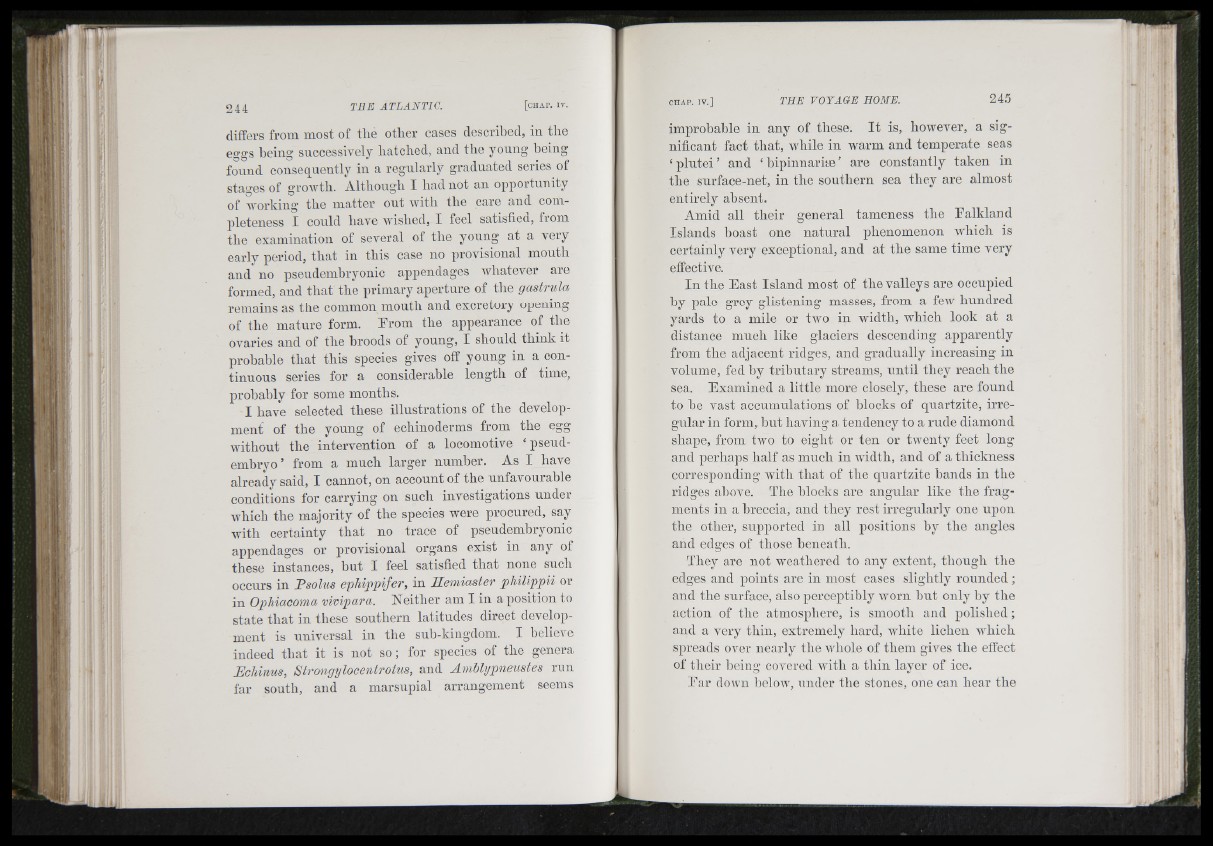
rf
' f
il* 1
! i
il
, 17,
7 I i “ i l i . ; ;
differs from most of tlie other cases described, in the
eggs being successively batched, and the yonng being
foniid consequently in a regularly graduated series of
stages of growth. Altbongli I bad not an opportunity
of working tbe matter ont Avitb the care and completeness
I could have nnslied, I feel satisfied, from
the examination of several of tbe yonng at a very
early period, that in this case no provisional mouth
and'^no psendemhryonic appendages whatever are
formed, and that the primary aperture of the gastrula
remains as the common month and excretory opening
of the mature form. Erom the appearance of the
ovaries and of the broods of yonng, I should think it
probable that this species gives off yonng in a continuous
series for a considerable length of time,
probably for some months.
I have selected these illustrations of the development
of the yonng of echinoderms from the egg
without the intervention of a locomotive ‘ pseud-
emhryo’ from a much larger nnmher. As I have
already said, I cannot, on account of the unfavourable
conditions for carrying on such investigations under
which the majority of the species were procured, say
with certainty that no trace of psendemhryonic
appendages or provisional organs exist in any of
these instances, but I feel satisfied that none snch
occurs in Psolus ephippifer, in Hemiaster piiilippii or
in Ophiacoma vivipara. Neither am I in a position to
state that in these southern latitudes direct development
is universal in the sub-kingdom. I believe
indeed tbat it is not so; for species of tlie genera
Echinus, Strongylocentrotus, and Amhlypneustes run
far south, and a marsupial arrangement seems
improbable in any of these. It is, however, a significant
fact that, while in warm and temperate seas
‘ plutei ’ and ‘ hipinnarim ’ are constantly taken in
the surface-net, in the southern sea they are almost
entirely absent.
Amid all their general tameness the Ealkland
Islands boast one natural phenomenon which is
certainly very exceptional, and at the same time very
effective.
In the East Island most of the valleys are occupied
by pale grey glistening masses, from a few hundred
yards to a mile or two in width, which look at a
distance much like glaciers descending apparently
from the adjacent ridges, and gradually increasing in
volume, fed hy tributary streams, until they reach the
sea. Examined a little more closely, these are fonnd
to he vast accumulations of blocks of quartzite, irregular
in form, hut having a tendency to a rude diamond
shape, from two to eight or ten or twenty feet long
and peidiaps half as mnch in width, and of a thickness
corresponding with that of the quartzite hands in the
ridges above. The blocks are angular like the fragments
in a breccia, and they rest irregularly one upon
the other, supported in all positions hy the angles
and edges of those beneath.
They are not weathered to any extent, though the
edges and points are in most cases slightly rounded;
and the surface, also perceptibly worn but only by the
action of tbe atmosphere, is smooth and polished;
and a very thin, extremely hard, white lichen Avhich
spreads over nearly the whole of them giA'cs the effect
of their heing covered Avith a thin layer of ice.
Ear down beloAV, under the stones, one can hear the